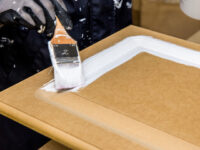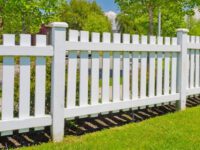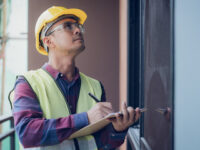How to Get a Roof Inspection

Many homeowners get a roof inspection after a major storm to see whether their house suffered damage. It’s also important to have a roof inspection before buying or selling a home, as an old or damaged roof can detract from its value.
During a visual inspection, the inspector will look for leaks around windows, doors, skylights, chimneys, and vents. Roofers in West Chester will also check for shingle damage and other structural issues.
Visual Inspection
Visual inspection uses energy from the visible light spectrum to detect physical flaws or imperfections. The light can be detected by the human eye, magnifying devices, mirrors or amplifiers, and borescopes. This method is often used in quality control and maintenance inspections, as it can be quick and efficient if the operator is skilled. However, the results can be inconsistent. This is because of factors such as examination settings (light source and background, auxiliary equipment), the operator’s training, eye sight and fatigue, concentration, primary packaging (vial type and size, filling volume) and formulation properties.
The best time to carry out a roof inspection is late summer or early fall, when the weather is warm enough and dry to allow for safe access and work. This will also give the inspector an opportunity to repair any issues before winter arrives and makes them much harder to deal with.
If a roof leaks, it is essential that this issue is dealt with swiftly, as the more moisture that enters the building, the more damage it can cause to other areas. A full roof survey can identify problem areas, and our team will be able to use Electronic Leak Detection equipment to locate the origin of the leak without any unnecessary disruption or flooding.
A roof is one of the most vital components of any home, and it can be easy to ignore small damage on a daily basis until it becomes more noticeable and expensive to fix. This is why it’s important to schedule regular roof inspections to spot problems, and to make preventive repairs before they worsen.
For very high buildings or those that are unsafe for humans to reach, drones offer a safer and more efficient alternative to manual visual inspection. A drone can survey an entire roof in the same amount of time it would take a human to reach just one point, and it provides high quality footage of the roof that can be analyzed by experts.
Flow charts and checklists are useful tools to help standardize the inspection process, and ensure consistency and accuracy. They should be easily accessible to maintenance technicians and quality control personnel, and should include clear guidelines on what constitutes a defect, and how the inspection should be conducted. Using a CMMS solution like Facilio, with a built-in visual inspection workflow template, can also make the process of creating and managing a checklist much easier.
Thermal Imaging
Performing a roof inspection without the aid of infrared imaging is time-consuming and labor intensive. A qualified inspector can use a drone equipped with infrared cameras to quickly scan large areas of flat commercial or industrial roofing. Thermographic imaging can be very useful in detecting hidden moisture problems within a building’s roofing system. Moisture causes the materials in a roofing system to absorb and retain heat differently than dry, functional materials. When used properly, thermal imaging can help identify the source of the problem, whether it is a leaking roof membrane or insulation.
A standard roof inspection uses a visual examination of the entire surface, including all visible components of the roof. However, this method fails to detect hidden damage like the underlying cause of a shingle or roof leak. For this reason, thermal imaging is often utilized when performing a roof inspection. Thermal imaging captures infrared radiation that is not visible to the naked eye, much like a smart phone camera takes pictures of visible light. Thermal imaging allows the inspector to find hot spots and other anomalies in the roof’s insulation or roofing material. The ability to locate moisture intrusion is extremely valuable in preventing costly repairs and replacements of roofing materials.
To get the best results from a thermal image, the inspector should be sure to scan under optimum conditions. For example, the roof should be free of snow, debris, standing water or other conditions that can mask moisture. Likewise, the inspection should be conducted an hour or two after sunset so that the thermal imaging can take advantage of a phenomenon known as “radiation cooling.” Radiation cooling occurs when the sun’s heat causes wet insulation to lose heat at a faster rate than dry, functional insulation.
A drone equipped with a high-resolution thermal camera can also be used to inspect the condition of penetration seals on the roof. Penetration seals are put in place to keep moisture, debris and pests from accessing the interior of the roof or a building’s structure. For this reason, they are critical to a building’s structural integrity and should be inspected regularly for signs of damage and failure.
Gutter Inspection
Gutters are important for the health of a roof because they safely direct water runoff away from the home and prevent the accumulation of water on the roof itself. Gutters should be inspected regularly to ensure they’re functioning properly, and homeowners should have them cleaned on a regular basis as well to remove debris that could lead to clogs or leaks.
When performing a roof inspection, the inspector should look at the gutters and downspouts. Often, the gutters will be dirty or full of debris and this will require them to be cleaned out before a thorough examination can take place. Inspectors should also check for holes and cracks in the gutters, as these can indicate that the gutters have been improperly installed or are starting to wear down. Inspectors should also check for accumulated dirt or debris in the gutters, as this can block positive drainage and cause severe damage to the roof over time.
Additionally, the inspector should look for signs of gutter problems such as rust or paint chipping off of the gutters or downspouts. They should also examine the fascia boards and eave flashing for signs of damage or rot. Inspectors should also look for the presence of fungus or moss on the roof and in the gutters, as these can deteriorate the roof over time and are indicative of moisture damage to the roofing system.
While there are a few homes that may pass a home inspection without having gutters, the inspector will often recommend that the homeowners install them as they are an essential part of a house’s protection from rainwater and other natural elements. Gutters protect the siding, foundation and other parts of a house from water damage and they help to avoid a buildup of water in the yard and other areas surrounding a home.
If you’re interested in having a professional perform a detailed inspection of your roof, contact Werner Roofing today for a free inspection in Fairfax County or Tysons, VA. Our experienced team of professionals will be happy to help! Our inspections can include a variety of services, including thermal imaging, visual examination, and a gutter inspection.
Attic Inspection
The attic is where roof problems can lurk, especially since homeowners rarely go up there. Home inspectors use attic inspections to find out if a home’s roofing system is in good condition. An attic inspection can reveal important information about the roof, such as ventilation and insulation. The attic is also where leaks and mold can present themselves.
Leaks in the attic are one of the most common problems a home inspector will find, and they can have serious consequences. They can damage the roof, walls and ceilings. They can even impact the quality of indoor air. An attic inspection can help a homeowner address leaks and mold before they get out of hand.
An attic inspection can also reveal the state of a home’s insulation, and a professional will look for signs that it’s not up to standards. A good insulation should be a snug fit and have no gaps or loose spots. An inspector will also check for the existence and condition of vents, chimneys and ductwork. In addition, he or she will assess the fire safety features of an attic such as smoke and carbon monoxide detectors, sprinkler systems and fire-rated drywall.
A professional will also inspect the attic for signs of pest infestation. The attic is a prime spot for rodents and pests to hide, so the inspector will search for droppings, nests and other indications of pests. A professional will also check the attic for bowed or warped beams and rafters, as these can indicate structural problems that may not be obvious from below.
An attic inspection can also reveal the state and condition of the ventilation system, which is important to a home’s energy efficiency. Proper attic ventilation shuttles air from inside the house to the outside, keeping the attic cool in the summer and warm in the winter. An inspector will check for rust on vent pipes and ductwork, and will look for signs of poor ventilation such as water stains, mold, rot and inadequate insulation.






